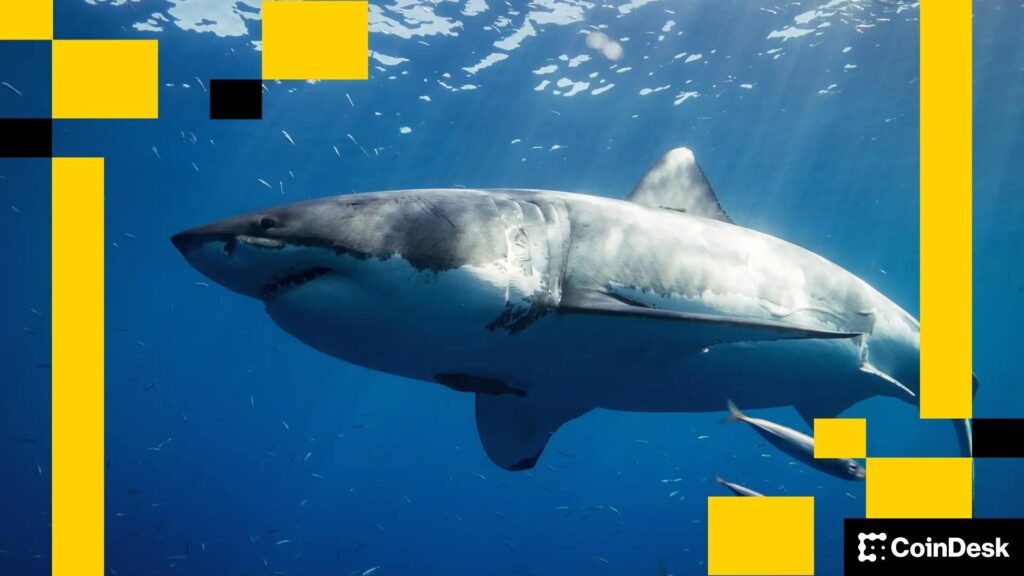The Fusaka upgrade to Ethereum, expected to go live in early December, promises to usher the world’s second most valuable blockchain into an era of institutional-grade adoption. For far too long, Ethereum has been too slow and too expensive to attract meaningful Wall Street business. That could change as Fusaka implements major improvements to how the network verifies and compresses data, increasing its speed and capacity by 10x.
Still, it won’t be easy for Ethereum to maintain its lead among developers as the chain of choice to build on; Continued development will be essential for Ethereum to maintain its existing edge as a platform for on-chain finance.
Ethereum remains the platform of choice among institutions for asset tokenization, DeFi apps, and stablecoin creation, based on strengths that come from its maturity. However, it faces threats that will erode its edge if it doesn’t move to meet the market: Like a shark, if Ethereum stops moving, it will die.
Strength: Ethereum Uptime
However, Solana has never completely overshadowed Ethereum. A major reason for that may be that over the past five years, as a blockchain system, Solana has gone dark seven times. Ethereum, as Fundstart Capital chief investment officer Thomas Lee said in August, has never crashed in its 10-year existence. Uptime is valued by financial institutions; it’s not sexy, but it’s one of the core features that make on-chain infrastructure attractive to market participants.
Strength: Ethereum ecosystem maturity
Another unsexy quality institutions will require: availability and maturity of developer tools and talent. While Solana attracted the most new developers of any chain last year, Ethereum’s Solidity has the largest developer community by a wide margin, a lead recently confirmed in a16z’s State of Crypto report.
Risk: Ethereum scaling
An ongoing problem that has hurt Ethereum is the pace at which it scales, which is to say something of an ice age. Fusaka will be a big upgrade, but it still won’t bring Ethereum and its rollup layer to the same transactions per second as Solana. In a world where a new GPT seems to come out every two months, Ethereum is long overdue in its goal, as its inventor Vitalik Buterin stated in 2017, to match the volume of transactions on the Visa payment network, and currently nowhere near Visa’s average 24,000 tps. In contrast, Ethereum’s layer-2 (L2) blockchains can process between 1,000 and 10,000 transactions per second.
Risk: Heavyweights and innovators break from the Ethereum settlement
New blockchains are increasingly being backed by publicly traded companies, such as Arc by Circle and Tempo by Stripe. Both Arc and Tempo are layer-1 (L1) blockchains, like Ethereum. Instead of building a chain on top of Ethereum as an L2 like Coinbase’s Base, Circle and Stripe decided to build their own settlement layer, albeit compatible with the Solidity programming language and the Ethereum Virtual Machine.
Another L1 is Hyperliquid, which is purpose-built as a decentralized exchange for perpetual futures trading. While this may seem niche, Hyperliquid, along with perp DEX Aster, earned 32% of all blockchain revenue in September, according to a VanEck analysis, edging out Solana. Just as Solana once came to steal Ethereum’s thunder, Hyperliquid looks set to do the same. And while the Oct. 10 crypto flash crash rocked Hyperliquid and angered many of its traders as winning positions were used to fund losses, it nevertheless survived as designed. All this must get the attention of Ethereum developers, right?
Ethereum’s path to meet the institutional market
There are plenty of openings for chains like Solana and Hyperliquid to take advantage of Ethereum’s shortcomings. A real race for developer mindshare is underway, as the opportunities for well-funded entrants like Circle and Stripe put pressure on Ethereum. Innovation is spread across multiple blockchain ecosystems and liquidity follows it, creating deep trading pools along with innovative new protocols. Will Ethereum lose the plot?
To avoid that, there is a lot of education around Ethereum that needs to be done before it will be fully embraced by mainstream corporate treasurers and the general public. For financial institutions choosing their preferred platforms for tokenization, trading and dividends, Ethereum’s human capital can be the ultimate decision maker. Ethereum’s core of contributors and ecosystem leaders have historically been an idealistic bunch, while also completing major upgrades like Merge without hiccups, and now Fusaka is ready to take the network to the next level. For the health and future of the network, core contributors will need to elevate people who can guide multi-year relationships.
For now, at least, Ethereum is still at the forefront of where institutional infrastructure in crypto is being built. It has proven vulnerable with its slow pace of scaling, the constant threat of upstart competitors, and always having Solana and others to keep it in check. If others address the institutional roadmap faster or better, Ethereum risks losing its edge, no matter how high the price of ETH may go.



